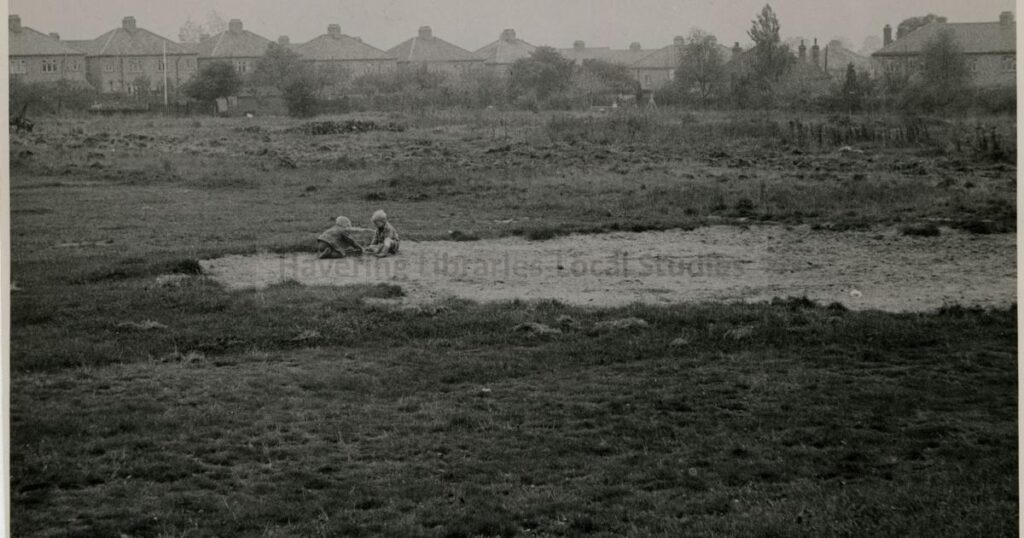This week, the Recorder is looking back at the history of Hylands Park in Hornchurch – an 11-acre green space with some fascinating stories.
The site was originally used as agricultural land in the early 1900s – followed by grazing and piggery – before a large trotting track was laid out by a developer in 1925.
An aerial view of Hylands Park in the 1930s showing the old trotting track (Image: Havering Libraries-Local Studies)
Hornchurch Urban District Council tried to stop plans to use the site for horse racing but was unsuccessful – the developer appealed to the Minister for Health and was allowed to continue.
READ MORE: The park near Romford that was once home to a huge mansion
This resulted in a public enquiry in October 1925, which led to the council negotiating with the owners to acquire the land for use as an open space.
The first race days were attended by large crowds and it is believed that royalty even went to the races at Hylands, according to Havering Council.

However, eventually the trotting meetings became less popular and the site closed after it was purchased by the council in 1927.
The park’s gates were from Grey Towers – which was used as a sportsman’s battalion and later a hospital for troops – and were moved to the entrance in 1929.
During the Second World War, the park became “briefly famous” after a “serious mishap” with the engine of a Spitfire fighter plane, the council said.

Pilot John McAdam took off from the nearby RAF Hornchurch on October 12, 1940 for a regular patrol, when he realised there were flames coming out of the plane’s engine.
The only open space he could see to land in was Hylands Park, but it was full of children playing.
Instead, the pilot managed to crash land the plane in a gap between two houses in Globe Road – slicing the wings off but meaning there were no casualties.
Towards the end of the war, the park was left with a large crater after being hit with a V2 rocket, which killed eight people and destroyed the park keeper’s hut.

READ MORE: Harrow Lodge Park: history of Havering’s largest open space
In the 1950s, Hylands underwent refurbishment, including the creation of a new putting green, the installation of children’s playground equipment and the setting out of a cricket square.
Other important events in the park’s history include the 1987 hurricane, which damaged many of its trees – with the replacements later planted by pupils from Edwin Lambert School.
Improvements were made to Hylands’ play area in 1994, before it was completely replaced in 2005 by an outdoor gym and multi-use games area.




